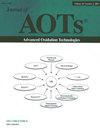铂电极上乙炔电催化合成草酸的电化学行为
Q Chemistry
引用次数: 1
摘要
摘要在Pt电极上实现了乙炔电催化合成草酸。采用傅里叶红外光谱法和紫外-可见分光光度法对电催化合成的草酸进行了表征。采用循环伏安法考察了电极材料、Na2SO4浓度、丙酮体积分数、温度和扫描速率对反应的影响。分析结果表明,在环境温度和压力下,在非常稳定的Pt电极上,以Na2SO4 (0.5 M)和丙酮(体积比2%)为载体,在8 h的反应时间内成功地电催化合成了草酸。Pt电极上乙炔电催化氧化反应的表观活化能Ea为14.42 kJ·mol-1,表明乙炔电催化氧化过程不可逆且受吸附控制。此外,基于Pt电极表面吸附和解吸原理,成功地设想了乙炔电催化氧化制草酸过程的反应机理。铂在乙炔电催化氧化过程中表现出优异的电催化性能,预示着乙炔在化工领域更广阔的潜在应用前景。本文章由计算机程序翻译,如有差异,请以英文原文为准。
Electrochemical Behavior of Electrocatalytic Synthesis of Oxalic Acid from Acetylene at Pt Electrode
Abstract Electrocatalytic synthesis of oxalic acid from acetylene has been achieved at Pt electrode. The electrocatalytically synthesized oxalic acid has been characterized by FTIR (Fourier transform infrared spectroscopy) and UV-Vis (UV-Vis spectrophotometry). Influence of electrode material, Na2SO4 concentration, acetone volume fraction, temperature and scan rate have been investigated by CV (cyclic voltammetry). The analysis results show that oxalic acid has been successfully electrocatalytically synthesized from acetylene at the very stable Pt electrode under ambient temperature and pressure, the supporting electrolyte is Na2SO4 (0.5 M) with acetone (2% by volume), the reaction time is 8 h and the conversion efficiency is larger than 20%. The Ea (apparent activation energy) of electrocatalytic oxidation reaction of acetylene at the Pt electrode is 14.42 kJ·mol-1, the electrocatalytic oxidation process of acetylene is irreversible and under adsorption control. In addition, the reaction mechanism of the electrocatalytic oxidation process of acetylene to oxalic acid has been envisaged successfully based on the principle of adsorption and desorption at Pt electrode surface. It exhibits the excellent electrocatalytic performance of Pt in the electrocatalytic oxidation process of acetylene and heralds more broad potential application prospect of acetylene in chemical industry field.
求助全文
通过发布文献求助,成功后即可免费获取论文全文。
去求助
来源期刊
CiteScore
0.88
自引率
0.00%
发文量
0
审稿时长
1 months
期刊介绍:
The Journal of advanced oxidation technologies (AOTs) has been providing an international forum that accepts papers describing basic research and practical applications of these technologies. The Journal has been publishing articles in the form of critical reviews and research papers focused on the science and engineering of AOTs for water, air and soil treatment. Due to the enormous progress in the applications of various chemical and bio-oxidation and reduction processes, the scope of the Journal is now expanded to include submission in these areas so that high quality submission from industry would also be considered for publication. Specifically, the Journal is soliciting submission in the following areas (alphabetical order): -Advanced Oxidation Nanotechnologies -Bio-Oxidation and Reduction Processes -Catalytic Oxidation -Chemical Oxidation and Reduction Processes -Electrochemical Oxidation -Electrohydraulic Discharge, Cavitation & Sonolysis -Electron Beam & Gamma Irradiation -New Photocatalytic Materials and processes -Non-Thermal Plasma -Ozone-based AOTs -Photochemical Degradation Processes -Sub- and Supercritical Water Oxidation -TiO2 Photocatalytic Redox Processes -UV- and Solar Light-based AOTs -Water-Energy (and Food) Nexus of AOTs

 求助内容:
求助内容: 应助结果提醒方式:
应助结果提醒方式:


